If lists the symptoms of cervical osteocondrosis, almost all adults will say that they felt them.This disease really has a significant prevalence: in developed countries, osteochondrosis occurs in 60-80% of the population.In order to distinguish if a person really has cervical osteochondrosis or are manifestations of a different state, it is necessary to have information on this pathology.The article describes the causes of the disease, its characteristics and manifestations, the methods of diagnosis and treatment.By possessing information on the pathology, patients will be able to recognize them at home and ask for help in a timely manner.
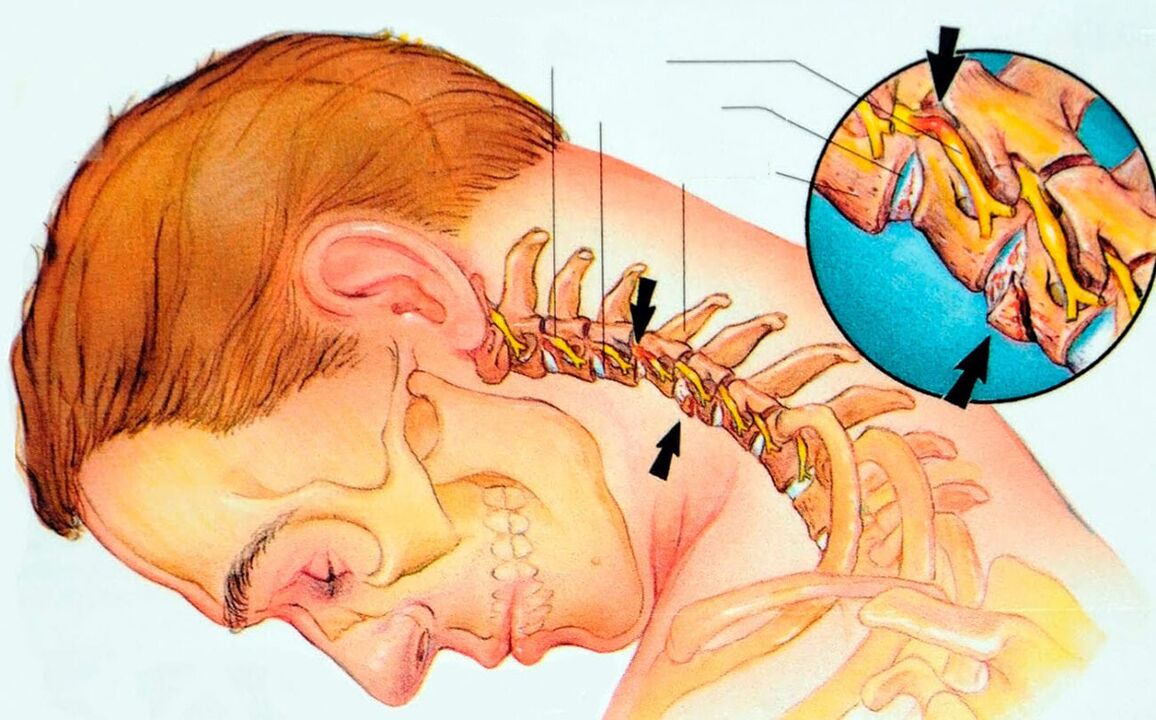
What is cervical osteochondosis?
The disease is of a degenerative nature and damages the structure of the spine with the primary and secondary mechanism.The pathogenetic mechanism of the pathology is that the structure of the vertebral connection is damaged.
Normally, among these areas there is a layer: octopous tissue.The spine is depreciated and optimizes the motor process.With cervical osteochondrosis, this soft substance is calcified and turns into a tough eye fabric.This damages nerve endings and blood vessels, violating their function.
Depending on the level of damage, osteochondrosis can manifest itself from pain or high pressure, compromised consciousness or numbness of language.It can be symptoms from the chest or back.This very complicates the diagnostic process.Patients may pass several diagnostic consultations before reaching a profile specialist.The diagnosis process uses different methods that allow to exclude the pathology from other organs and systems.
Gradually, the cervical osteochondrosis "becomes younger" and is increasingly found in young patients.Modern young people begin to encounter problems with their neck much before their parents.
Osteocondrosis is the degeneration of the cervical region, which is customary to be considered by two positions:
- Physiological changes.In fact, the degeneration of the cartilage is a natural part of the development, which is regulated by the neuro -endocrine mechanisms and is irreversible.The process begins with the center of the pulp layer and gradually passes to the outskirts.The soft tissue is replaced by fibrous fibrosis elements.This process practically does not disturb the patient and manifests itself only when it affects nerve endings.
- Pathological changes.Destruction of the vertebrae following the effect of a series of factors.This process is in advance on physiological changes and leads to a violation of the function of the spine.Symptoms accompany this condition almost always, because they spread outside the structure of the cartilage and damage nerve endings, blood vessels.
The course of the disease can be of a different nature: sometimes the pathology is compensated independently or vice versa: there are periods of exacerbations.At the same time as the pathological process, the compensation mechanisms are included, which temporarily extend the vertebral function and eliminate symptoms.
However, the further course of the disease leads to the destruction of the fibrous ring, the appearance of Microcack.The vertebrae lose their stability and fixation, which manifests itself from a clinical picture of the disease.
In addition, cervical osteochondosis is the impregnation of the pulp of the intervertebral space with calcium.This form a kind of hernia, because the damaged vertebra is pressed in the body of the neighboring one.These structures are consumed and consequently there is a massive ossification of nearby structures.
The course of cervical osteochondosis has several phases:
- Phase 1 is the instability of vertebral structures and the violation of the discs;
- 2 stadiums: reduced fixation of the spine and protrusion of the disc;
- Phase 3 - breakage of a fibrous ring, serious symptoms and pain;
- The fourth phase is accompanied by difficulty in motion, acute pain and widespread bone diffusion.
The characteristics of the anatomical arrangement of muscles and blood vessels: they make the neck a vulnerable area of the body.A long course of osteochondrosis leads to numerous complications, including vascular nature.Many of them can cause significant damage to patient health and constitute a pronounced risk.
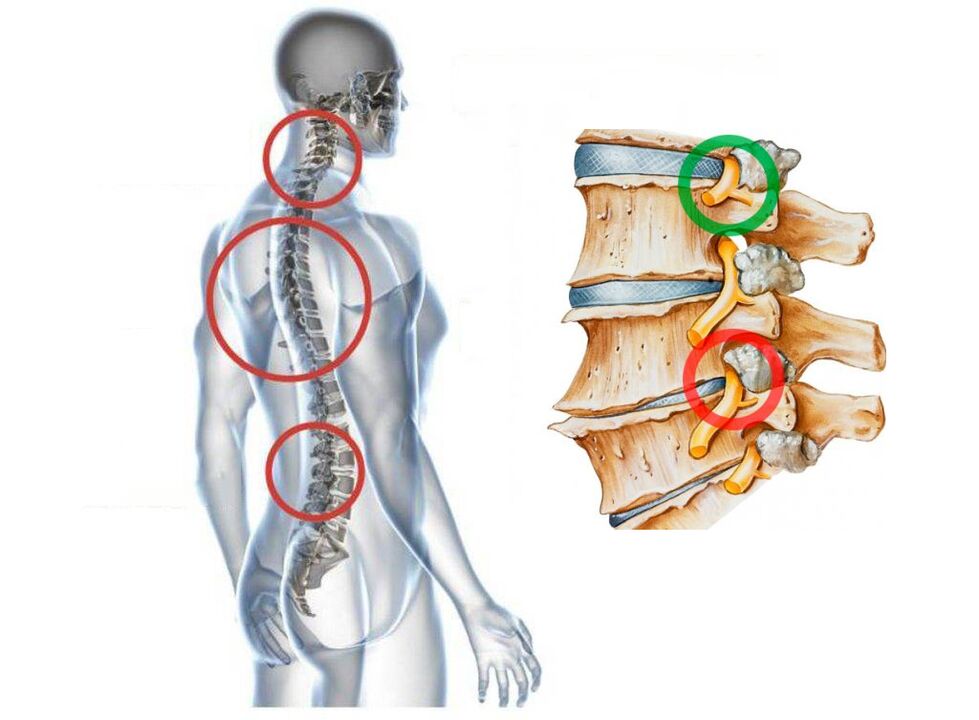
Symptoms
The danger of cervical osteochondrosis is that it does not manifest itself from the symptoms for a long time.This is facilitated by the masking of the signs of the disease for another pathology, as well as by an independent administration of analgesic drugs.This makes the diagnosis of long and difficult cervical osteochondrosis.It is important not to delay the diagnosis until the structure of the vertebrae has been replaced by bone tissue.
Consider the main groups of symptoms found in the osteochondosis of the cervical region and their characteristics.
Dizziness
As mentioned above, most of the symptoms of osteocondrosis can be characteristic of other conditions.Therefore, the dizziness is accompanied by the vascular pathologies of the central nervous system, damage to the auditory system, malfunctions of the vestibular apparatus and cardiovascular diseases.The dizziness are accompanied by intoxication services, inflammatory.It is important to take into account a holistic clinical picture and not of individual symptoms.In addition, you should learn to distinguish between the main types of dizziness for reasons for its presence.
With osteochondrosis of the cervical column, a systematic type of dizziness occurs.It seems to the patient that the surrounding objects begin to be in motion.This disorder can be observed after a head and neck lesion, as well as against the background of the diseases of the vestibular apparatus.
Heachache
Once again, it is extremely difficult to call this specific symptom.The pain in the head can accompany the overload, the increase in pressure and the serious acute conditions.With osteochondrosis, headaches occurs due to compression of nerve endings.This leads to spasming of arteries that take blood to the brain, as well as to increase the pressure in the central nervous system system.The result is a pronounced feeling of headaches.
The characteristics of the headache in this case are an opaque character and a pulsation feeling.Sometimes pain can manifest itself with attacks and sometimes has a constant character.The parameters of pain for osteochondosis resemble the characteristics of this with hypertension, Angina pectis.The differences in the headache in cardiological pathology are that it is accompanied by thoracic pain, heart rhythm, changes in the ECG.Therefore, only a doctor can finally determine the cause of pain.
Pain syndrome of various location
In addition to headache, the patient is often worried about neck pain.This is called cervical and a complication of the osteocondrosis.The painful sensations can radiate to the higher limb.Patients note that pain in their hands occurs after awakening, against the background of sudden movements.Painful sensations go by alone after a short rest.
The characteristics of the characteristics of pain syndrome with cervical osteochondrosis are listed below:
- The unpleasant sensations are located in the deep fabrics of the neck;
- Curves are often accompanied by pain and creaking;
- There is muscle weakness, numbness, cooling of the hands.
Very often, the osteochondosis of the neck affects two lower vertebrae - 6 and 7. For a small diagnosis of cars, this method is recommended.It is necessary to pay attention to the combination of pain in the neck and fingers of the hand.Very often, if the sixth vertebra is affected, the pain will take place in the thumb and the changes in the seventh vertebra are accompanied by discomfort in the middle finger.
Changes in blood pressure
Such a symptom appears when nerve endings and blood vessels are influenced by the changes of the vertebrae.How to distinguish this phenomenon from hypertension?First of all, the hypertension for cervical osteochondosis is not constant and has its jumps in one day.
Osteochondrosis consists of the following syndromes:
- Vertebral.It is also called vertebrae, which indicates that the bones and the fabric of the cartilage are involved in the pathological process.This leads to the formation of these symptoms: restriction of the motor activity of the neck, node in its curves, radiological changes in the image of the cervical column.It is the simultaneous aspect of these signs which is a vertebral syndrome.
- Vertebral artery syndrome.It appears when vascular rays are involved in the process, which are responsible for the blood flu to the tissues of the central nervous system.Symptoms suggest that brain tissue has stopped receiving a correct amount of nutrients.How to recognize this syndrome?The first signs are dizziness, a sense of noise in the ears, the differences in blood pressure, the appearance of a "veil" in front of the eyes.This suggests that one of the vertebrates is in an strangled state.Each ship has its nerve finals.If those who innervate the vertebral artery are tightened: migraine, numbness, short -term reduction of vision on the one hand.As a result, the changes in the ship lead to the fact that the brain needs oxygen.Right now, a person feels sleepy, short -term violations of consciousness, loses attention and control, works worse and recalls information.With such a clinical picture, it is necessary to differentiate cervical osteochondosis with atherosclerosis of the vertebral arteries and squeeze the tumor or inflammation.
- Cardial syndrome.It manifests itself by burning in the chest area, the appearance of the lack of breath.A person feels his frequent heart beat, becomes tired and irritable.This picture is also characteristic of cardiological pathology, for example for Angina pectis, coronary syndrome, heart attack.The exact conclusion on the causes of these symptoms can be done after the patient has passed the ECG.
- Rook syndrome.The cervical department innervates 8 pairs of nerves, each of which has roots: the nerve that comes out of the vertebra.When they are involved in the osteocondrosis, the patient feels a decrease in sensitivity or vice versa - severe pain.There may be numb in the fact that his pain, a decrease in language sensitivity, the freezing area, pain in the supracinking region.Sometimes there are disorders of swallowing, movements in the belt of the upper limb, numbness of the fingers.
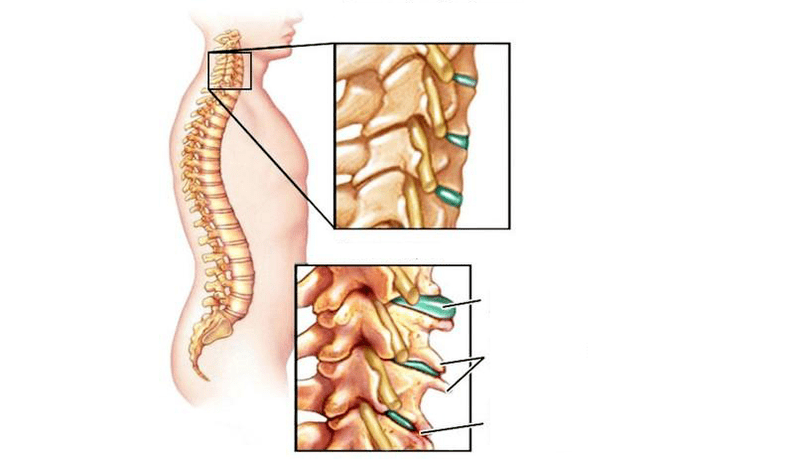
The causes of cervical osteochondosis
The main reason for the development of osteocondrosis is the improper distribution of the load on the spinal column.The reasons can be different: a person can wear a bag or weight in one hand, takes an incorrect pose when he sits or sleeps on an irregular surface.It increases the load and a high pillow and shoes that do not correspond to the anatomical characteristics of the foot.These reasons may seem insignificant, but act for a long time and, consequently, lead to a logical consequence in the form of osteochondrosis.
Among the risk factors that increase the possibility of the occurrence of the disease:
- low level of physical activity;
- increase in body weight;
- Spinal lesions transmitted;
- violation of the posture or pathology of the foot;
- Reduction of blood flow to the cervical column.
All this leads to the fact that the wrong position of the vertebrae is formed.The weight is not distributed in all sections of the cervical region evenly and some of its departments carry heavy loads.The answer is a change in the fabrics.
At a certain point or the other, the situation can be aggravated:
- Has undergone serious diseases or injuries that led to an exhausted state of health;
- Frequent stress;
- Violation of the metabolism in the body, reduced the consumption of trace elements, their increase in consumption or the lack of absorption in the intestine;
- Occupational diseases (in particular, vibrational disease);
- Hereditary tendency to osteocondrosis;
- Scoliosis and other disorders of the musculoskeletal system;
- Violation of the drinking regime;
- Low quality nutrition and bad habits;
- Pregnancy.
As you can see, there is not only the cause of osteochondrosis.There is only a series of factors that can cause it.Once again, the same reason affects different people in different ways.The state of health, the duration, intensity and number of risk factors, background pathologies and the mode of life play a role.
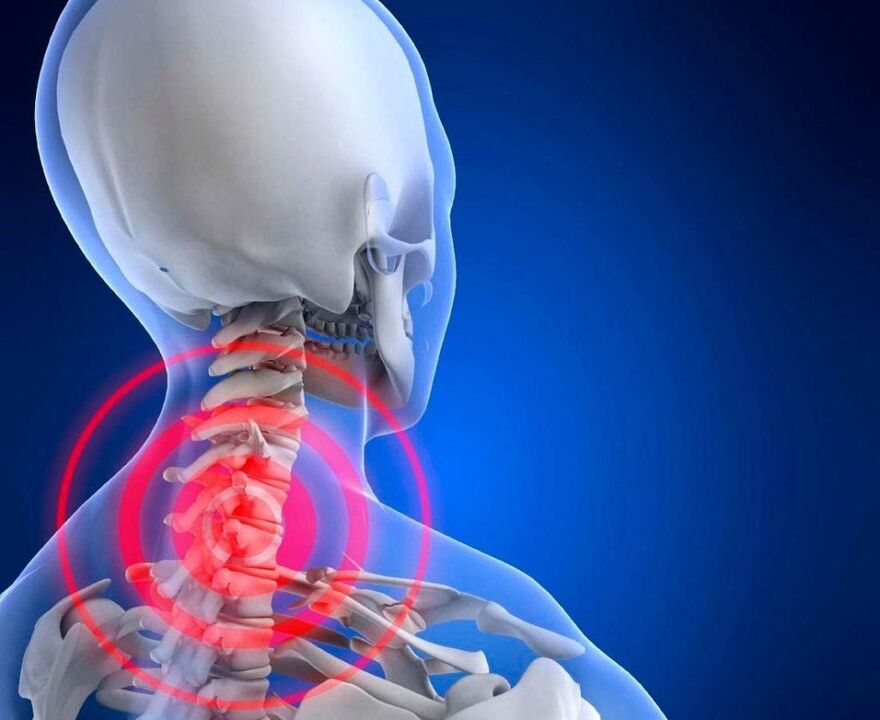
Modern treatment methods
Even before the prescription of the therapy, the patient must change the way of life.For this, it is necessary to change the level of loads that the cervical department experiences.It is necessary to monitor the quality of nutrition, to allocate the time necessary for sleep and rest, to be careful of stress.If the body has a basic pathology that aggravates the course of the osteocondrosis, it is necessary to undergo a treatment course and eliminate it.The choice of the treatment method depends on the stadium of the osteocondrosis and the well -being of the patient.
Treatment can be:
- not -dogue;
- drug;
- Surgical.
Separately also consider folk methods and rehabilitation measures.
Non -pharmacological treatment methods consist in the use of therapeutic exercises, simulators or special devices, manual therapy and physiotherapy methods.The correct purpose is facilitated by improving the flow of blood in the vertebrae or slowing down the ossification process.
As for manual therapy or massage, be sure to consult a doctor on their opportunity.Do not assign these methods independently.In some phases of the osteocondrosis, the massage can only damage and lead to a long immobilization.If manual therapy is carried out according to the indications, it is able to relieve symptoms and improve patient well -being.
From physiotherapy techniques, with cervical osteochondrosis, the following are used:
- magnetotherapy;
- therapeutic bathrooms;
- Therapeutic shower;
- mud;
- electrophoresis.
The use of medicines is indicated in case of exacerbation of the situation.Many of them eliminate inflammation and acute pain, improve blood flow to the tissues, restore cartilage structures and ensure joint mobility.This is a global approach to causes and symptoms and not a unilateral solution to the problem.After taking medicines selected correctly, the patient again has the opportunity to move the neck, ceases to experience irritation, worsen the mood, return to normal work and sleep.
Consider groups of drugs used for cervical osteochondrosis:
Non steroidal anti -inflammatory drugs
They are used to reduce inflammatory phenomena in tissues, eliminate pain, relieve the crushing of roots and blood vessels.With minor symptoms, ointments and gels are used, the most intense pain syndrome is arrested by the forms of the tablets.The administration of injection is prescribed with a serious intensity of pain and its acute occurrence.
They may have other commercial names, but the active substance remains unchanged.The patient should take drugs with the course, only after the approval of the attending physician.Please note that these funds must be taken after eating, as they can irritate the mucous membrane of the gastrointestinal tract.
Vasodilators
Their function is the expansion of the vessels that are restricted against the background of the course of osteochondosis.Drugs - Pentoxifillin, Actovegin, Berlithion.These drugs will breed the vertebral artery syndrome, will improve the blood flow in the patient's vertebrae and well.It is necessary to monitor the lack of contraindications to these substances in the patient, as well as their compatibility with other drugs that a person assumes.
Muscle relaxants
The purpose of this group is a decrease in the spasm of the neck muscles.This accelerates and optimizes the processing process, since muscle tension acts on the vessels and nerve terms.Regular intake normalizes the tone of the blood vessels, reduces the sensation of pain.
Condroprotectors
Take to improve the conditions of the cartilage elements of the spine and protect their structure from destruction.A long reception of these substances is needed, otherwise they will not have the right action.Patients may not please the effect only after 6 months of use.However, if this effect is achieved, it will be persistent and will significantly improve the clinical picture.
Sedative
They are used as auxiliary substance to eliminate depressive manifestations and stress.In slight cases Valerian, Motherwort, Mint and Lemon Balm are used.If depression advances, more serious substances are needed.They will improve sleep and mood, they will help the patient to tune in to effective treatment.
Vitamins
The welcome of the vitamins of group B. can be recommended by food: this path of introduction of vitamins is more physiological and does not bring a special load on the liver.If you observe a vitamin deficiency, you can use vitamin and drug complexes.This will improve sensitivity and innervation, will accelerate the process of restoring fabrics.
Since the processing process is prolonged and gradually brings the effect, all phases of taking drugs are important.Make sure the drugs are kept in the right place, as indicated in the package.If on the box it is written that it is necessary to keep medicines in a dark or beautiful place - Fallo, otherwise the drug will lose its properties.Observe the duration of the course and the frequency of the application: some substances tend to accumulate in the body and only have the right effect.
If the introduction path is injectable, the procedure must be performed by the medical staff or by a trained person, since the correct introduction increases efficiency.Tablet forms must be taken after meals, washed with water.Pay attention to this moment, since other liquids are not suitable for this.The combination of grapefruit juice and drugs is particularly dangerous: the enzymes contained in this fruit slow down the liver function and reduce the delivery of medicines to the fabric.
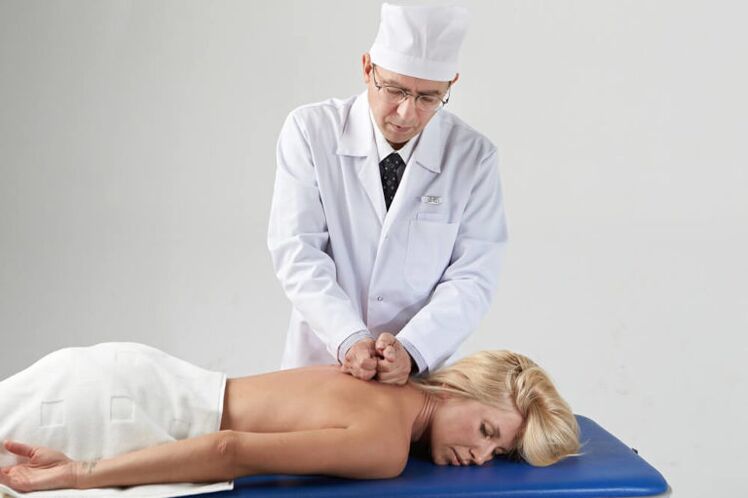
Surgical treatment of cervical osteochondosis
This method is used when cervical osteochondrosis has led to a narrowing of the spinal column light.This can happen due to an hernia or protrusion of the disc.The narrowing of the canal is accompanied by a significant stenosis of the vases and compression of the rays of the nerves.If you observe an isolated hernia of intervertebral discs, this is also an indication for surgery.The operation is necessary for Spondilolistz - a movement of the vertebrae from the axis.In addition to these indications, the doctor pays attention to the quality of life of the patient, to his condition, to the severity of the symptoms.
Types of surgery:
- Supported spondilodeza.The essence is to eliminate the damaged disc and replace it with a mobile connection, a prosthesis that performs the function of a remote structure;
- Dynamic stabilization of the spine.A silicone system is introduced between the rotation processes along the spine, which correctly distributes the load and stabilizes the vertebrae;
- Vaporization of the core of the disc with a laser beam.This is a modern technique that shows good results.The laser affects the core of the disc, reducing its size and eliminating hernia.The intervention is atravmatic, it can be carried out under local anesthesia.However, a series of indications for this manipulation is limited, it can only be done in that phase.When a size of hernia is not more than 6 mm.This is once again focused on why the first search for a doctor and timely diagnosis are useful.
Surgical interventions take place in the hospital.Depending on the degree of complexity of the treatment, the duration of the postoperative period and rehabilitation differ.The conduct of surgery implies a further complex of drugs: medicines for the preparation of the patient, analgesics, antibacterial therapy for the prevention of septic complications.
Diagnostics
The beginning of the diagnosis is the beginning of the patient's address to the doctor and the list of symptoms.The doctor listens to the patient's complaints, describes them in detail, the shapes of the symptoms of the syndromes.In addition, the specialist needs details on clinical manifestations: the occurrence time, if the treatment methods have been used and which influence, nature of pain, more pressure periods and more have been used.In important information is information on an uncomfortable position during sleep, work, bad habits, basic diseases.All this is clear during the conversation.
X -Ray is performed in direct and lateral projections.A functional radiological study is conducted simultaneously with the rotation of the neck.The contrast of the spinal canal is used to better view the affected areas.The contrast can be introduced into the ship or on the disc itself, depending on the method called angiography or discography.In the photo you can see fabric seals, calcification deposits, movement of the structures of the spine.
As for magnetically resonance imaging tomography, this is the most informative method, which is also painless and fast.The doctor can see damage and establish the severity of the process.The scans of the tomographer will help the surgeon prepare for the operation, to determine the hernia, the changes in nerve endings and on the blood vessels.
Magnetic resonance imaging is carried out in the absence of contraindications that are metal objects in the body, claustrophobia.pregnancy.
The computerized tomography also provides an accurate diagnostic picture.The study does not take much time: about 10 minutes and does not require special preparation.The load of radiation in this study is small, which makes the tomography safe for health.Contraindications: pregnancy and breastfeeding, age of children.
In addition to the methods that allow you to view the pathological process, further diagnostic manipulations must be used.
These include an ultrasound study on the head and neck vessels.The indications for the diagnosis are dizziness, headache, pressure falls.The specialist will determine the patency of the blood vessels and the state of the bloodstream.The most informative method, in this case, is a duplex scan of blood vessels.
Prevention
As you can see, cervical osteochondrosis has a diversified clinic, many syndromes and requires a serious approach both in diagnosis and in treatment.If you pay attention to your sensations, listen to the body and answer its signals, an early diagnosis is possible.In the early stages of the disease, the treatment has a high effect.
To do this, contact a profile specialist and pass through the necessary research methods.A high quality and timely treatment will avoid complications, it will improve well -being and quality of life, eliminate depression and normalize sleep.Tune in to a positive way and you can again feel freedom of movement.






































